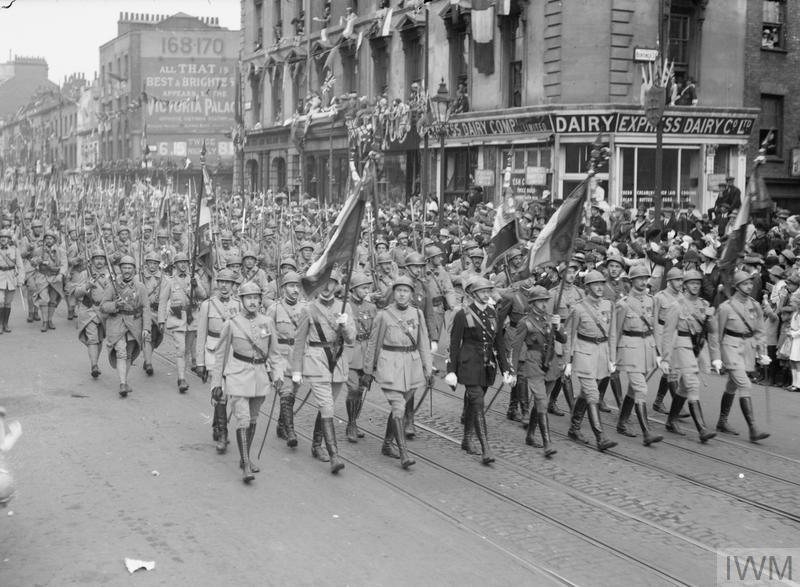
It's often trained in Music Theory classes in high school, or if not that, in MIDI music classes (Do they even teach MIDI anymore? That tech is like two decades old). Simply transcribing it from one key to another and changing the time signature, which is extremely simple for anyone trained in classical music, is all that he did, and it made a completely different sound. Major keys, like this is in, create a happy or excited sound. Minor keys, such as the ones used in ROTJ, create a sinister, angry, or sad sound. ↑ 4.0 4.1 4.It's not only sped up, it's also in a completely different key.

#VICTORY MARCH STAR WARS GENERATOR#
↑ 2.0 2.1 Star Wars: Armada – Rapid Reinforcements I (Card: Victory I-class Star Destroyer) depicts the Victory I-class Star Destroyer as having two deflector shield generator domes, as identified by Star Wars: Card Trader (Card: Star Destroyer - Blueprints).Star Wars: Armada – Rapid Reinforcements I (Card: Victory I-class Star Destroyer) (First pictured)." Ships of the Empire and the Rebellion" – Star Wars Encyclopedia (First identified as Victory I-class Star Destroyer).Starships and Speeders (First mentioned) (Indirect mention only).The image was an edited and repurposed image of the box cover art for the Victory -class Star Destroyer Expansion Pack, which was released in by Fantasy Flight Games.
#VICTORY MARCH STAR WARS PDF#
The Star Destroyer was then pictured on a card for the Victory I-class Star Destroyer in " Rapid Reinforcements I," a new print and play expansion that was released by Atomic Mass Games as a downloadable PDF document on April 7, 2022. It was subsequently identified in " Ships of the Empire and the Rebellion," an encyclopedia issue from Star Wars Encyclopedia from De Agostini, which was released on Octoin Spain and October 28 of the same year in France.

The Victory I-class debuted in the new Star Wars canon when it was indirectly mentioned in the entry for the Victory II-class Star Destroyer in the 2020 Fantasy Flight Games Star Wars Roleplaying sourcebook, Starships and Speeders. The original image, as depicted on the Victory -class Star Destroyer Expansion Pack. Despite extensive rebuilds, the Victory II-class failed to eliminate all of its predecessors issues. įollowing the transition of the Republic into the Galactic Empire, the Imperial Navy inherited Victory-class Star Destroyers and were given a life extension service program and became the Victory II-class Star Destroyer. The Victory-class gained the reputation of being an unlucky ship and as a spacefaring coffin. As a result, the vessel had a degree of design flaws that required continuous maintenance by crew members to keep the vessel combat ready. The Victory I-class was introduced at the height of the Clone Wars by the Galactic Republic Navy after being rushed into production following many delays and political squabbles. The Victory II-class Star Destroyer was the successor of the Victory I-class. The Star Destroyer also had two protruded sections, one on each side of the hull, partially covering the hull's side ridges.

Adjacent to the pole was a boxed structure at the center of the tower. Additionally, a spherical pole extended horizontally from the starboard side of the tower. Next to a dome on the portside, was a long antenna.

A command tower rose near the aft of the ship on an elevated area, and two deflector shield generators were situated on top of the tower. Victory I ships of the Galactic Republic were gray with red livery, and were dagger-shaped. The Victory-class Star Destroyer line was an all-purpose heavy line-of-battle ship that was meant to support planetary landings and participate in fleet actions. The Victory I featured a class 1 hyperdrive, and was armed with twelve quadruple turbolaser batteries, forty dual turbolasers, ten tractor beam projectors, and concussion missile launchers. A model of Star Destroyer, the Victory I-class Star Destroyer measured at 900 meters.


 0 kommentar(er)
0 kommentar(er)
